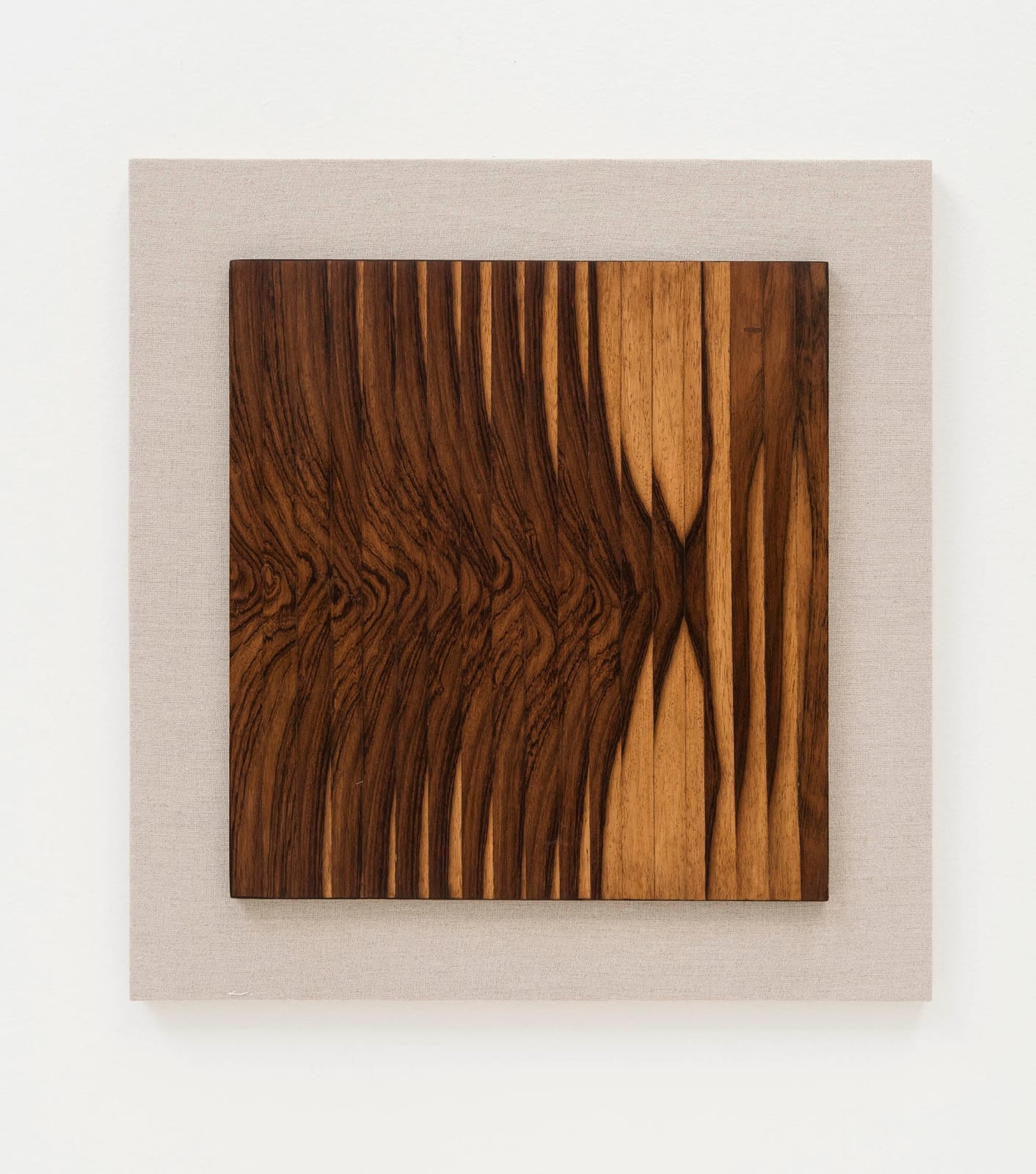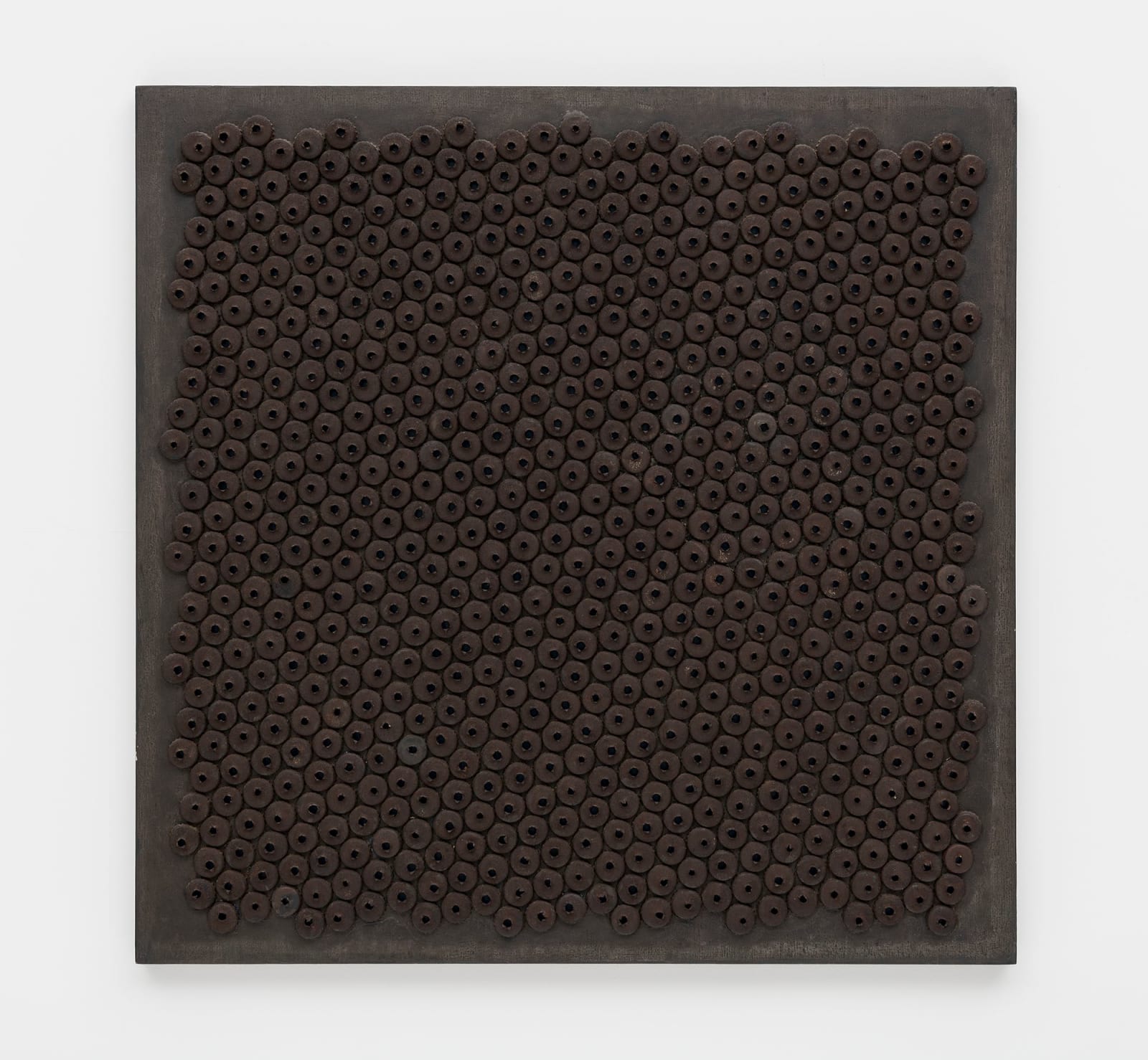Brazilian Threads: SP-Arte: rotas brasileiras
Galatea is pleased to announce the participation in SP–Arte Rotas Brasileiras, which will take place at Arca, between August 24 and 28, 2022. The project presented is entitled Tramas brasileiras [Brazilian threads] and consists of a group show of Brazilian artists who deal in their works with geometric compositions built from the weft, the grid, the graphism, and the monochrome.
The art produced in Brazil in the second half of the 20th century was marked by the prominence of geometric abstraction and constructivism, an aspect that decisively shaped the course of Brazilian art history, and whose influence is remarkable to this day. Since the Brazilian constructivism of the 1950s was still strongly tied to the European avant-gardes that had led to its appearance, it was only at the turn of the 1960s that it began to embrace further experimentations beyond geometry, incorporating issues of daily life, culture, and Brazilian reality. Even so, all the rich and complex geometric-based indigenous artistic production was left aside by most of the concrete artists and critics of the time, with the artists Aluísio Carvão and Ivan Serpa being two of the few exceptions.
Based on the potential dialogue and friction between the geometric tradition of Brazilian indigenous peoples and the concretism that marked Brazilian art in the 1950s, this project aims to present works that deal with abstractions, geometries, wefts, graphisms and monochromes in their compositions, juxtaposing and connecting artists from the second half of the 20th century with contemporary ones, as well as indigenous artifacts from the Asurini, Baniwa, Juruna, Kadiweu, Kaiapó, Tukano, and Waujá peoples. For that purpose, we will feature works by artists such as: Abraham Palatnik, Aislan Pankararu, Alfredo Volpi, Aluísio Carvão, Bruno Baptistelli, Bu’ú Kennedy, Carol Cordeiro, Celso Renato, Décio Vieira, Frans Krajcberg, Ione Saldanha, Ivan Serpa, Jaider Esbell, Joaquim Tenreiro, Judith Lauand, Luiz Hermano, Lygia Clark, Marcos Coelho Benjamin, Mestre Didi, Mira Schendel, Montez Magno, Raymundo Collares, Rubem Ludolf, Rubem Valentim, Sergio Camargo, Tunga, Ubi Bava, among others.









![Carolina Cordeiro, Sem título, da série América do Sal [Untitled, from the series América do Sal], 2021/2022](https://artlogic-res.cloudinary.com/w_1600,h_1600,c_limit,f_auto,fl_lossy,q_auto/artlogicstorage/antoniabergamin/images/view/5ab6b16e3bf844c72e3553ae67814035j/galatea-carolina-cordeiro-sem-t-tulo-da-s-rie-am-rica-do-sal-untitled-from-the-series-am-rica-do-sal-2021-2022.jpg)
![Carolina Cordeiro, Sem título, da série América do Sal [Untitled, from the series América do Sal], 2021/2022](https://artlogic-res.cloudinary.com/w_1600,h_1600,c_limit,f_auto,fl_lossy,q_auto/artlogicstorage/antoniabergamin/images/view/5073b7500040b9299dd487db3ec65607j/galatea-carolina-cordeiro-sem-t-tulo-da-s-rie-am-rica-do-sal-untitled-from-the-series-am-rica-do-sal-2021-2022.jpg)


![Bruno Baptistelli, Sem título, da série Superfícies [Untitled, from the Superfícies series], 2014](https://artlogic-res.cloudinary.com/w_1600,h_1600,c_limit,f_auto,fl_lossy,q_auto/artlogicstorage/antoniabergamin/images/view/28e064977178e87cf06a1c0ec3f7d224j/galatea-bruno-baptistelli-sem-t-tulo-da-s-rie-superf-cies-untitled-from-the-superf-cies-series-2014.jpg)
![Celso Renato, Sem título [Untitled]](https://artlogic-res.cloudinary.com/w_1600,h_1600,c_limit,f_auto,fl_lossy,q_auto/artlogicstorage/antoniabergamin/images/view/b33637b75bbb867a0cbdad554675899cj/galatea-celso-renato-sem-t-tulo-untitled.jpg)



![Montez Magno, Sem título, da série Portas de Taquaritinga [Untitled, from the Portas de Taquaritinga series], 1983](https://artlogic-res.cloudinary.com/w_1600,h_1600,c_limit,f_auto,fl_lossy,q_auto/artlogicstorage/antoniabergamin/images/view/8f84c4352b14e115af8b0f08d8e7aa5aj/galatea-montez-magno-sem-t-tulo-da-s-rie-portas-de-taquaritinga-untitled-from-the-portas-de-taquaritinga-series-1983.jpg)
![Aluísio Carvão, Sem título [Untitled], 1960](https://artlogic-res.cloudinary.com/w_1600,h_1600,c_limit,f_auto,fl_lossy,q_auto/artlogicstorage/antoniabergamin/images/view/cec7950e58e4a29044c56307cbf225b8j/galatea-alu-sio-carv-o-sem-t-tulo-untitled-1960.jpg)
![Montez Magno, Sem título, da série Tantra [Untitled, from the series Tantra], 1974](https://artlogic-res.cloudinary.com/w_1600,h_1600,c_limit,f_auto,fl_lossy,q_auto/artlogicstorage/antoniabergamin/images/view/a071b60f29fea493e0b5cabf59e72158j/galatea-montez-magno-sem-t-tulo-da-s-rie-tantra-untitled-from-the-series-tantra-1974.jpg)

![Mira Schendel, Sem título [Untitled], 1963](https://artlogic-res.cloudinary.com/w_1600,h_1600,c_limit,f_auto,fl_lossy,q_auto/artlogicstorage/antoniabergamin/images/view/b8f485fcf2c8a0d9b6d5a8f7dd416abdj/galatea-mira-schendel-sem-t-tulo-untitled-1963.jpg)
![Alfredo Volpi, Sem título (Abstração com arcos e faixas) [Untitled (Abstração com arcos e faixas)], meados da década de 1970 [mid 1970’s]](https://artlogic-res.cloudinary.com/w_1600,h_1600,c_limit,f_auto,fl_lossy,q_auto/artlogicstorage/antoniabergamin/images/view/2454232948df2f2dffcc1ed3e2f2bcafj/galatea-alfredo-volpi-sem-t-tulo-abstra-o-com-arcos-e-faixas-untitled-abstra-o-com-arcos-e-faixas-meados-da-d-cada-de-1970-mid-1970-s.jpg)






